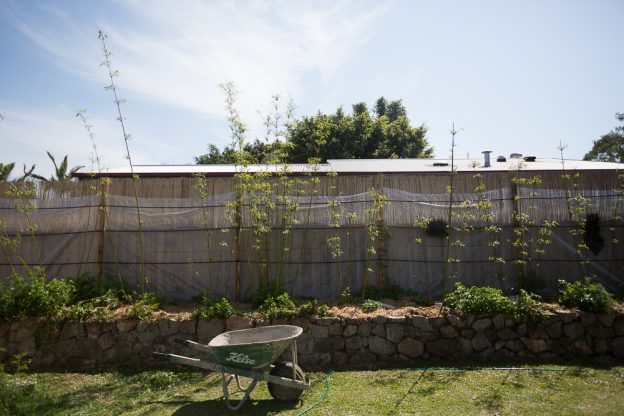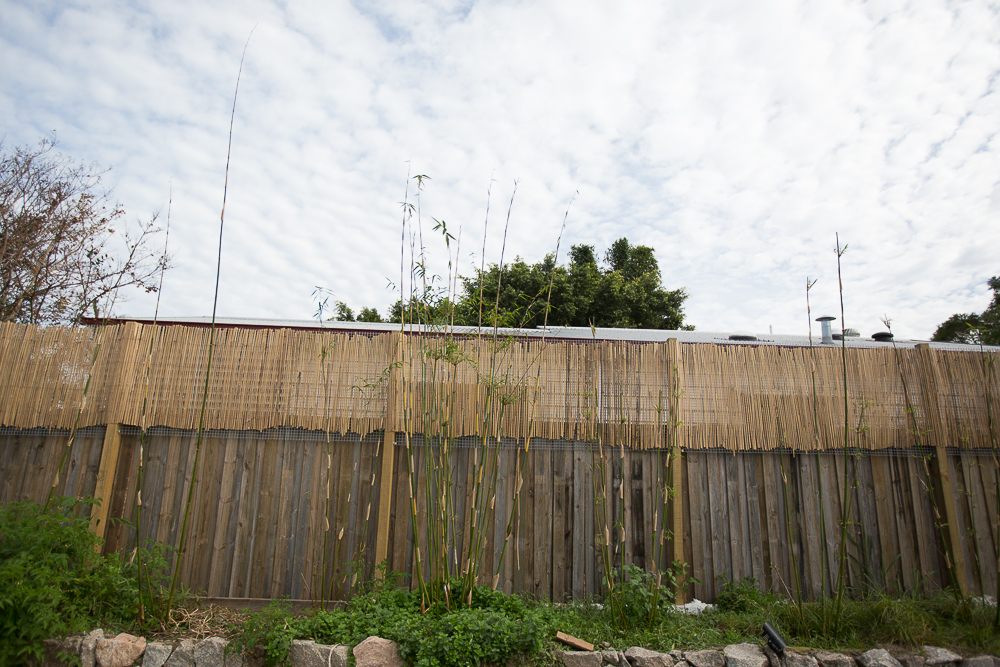For juicy neighbour stories and a good laugh check “Dear Neighbour”.
So it’s been a while since I updated my blog with some shitty neighbours stories. I have received a large number of supporting emails and many inquisitive souls have asked for updates. As I am feeling in a festive mood today, I thought it would be the perfect time to provide yet another update.
The following top 10 bamboo tips have helped address my privacy issues with my neighbours. Consider this as free advice that worked for me. In no way do I recommend you try this yourself prior to seeking advice from your legal counsel.
Top 10 bamboo tips
1) Planting bamboo or similar plant to form a privacy hedge.
Obviously the tips outlined in this post are all related to protecting your bamboo investment. Make sure that if you decide to plant bamboo, you choose a clumping variety that suits your purpose. And if you have the time, money and patience, plant your bamboo in a raised garden bed so they can’t say “your bamboo is growing into our yard”. For my purpose, I picked Bambusa Textilis var. Gracilis.
2) Increasing the fence height and installing “garden furniture”.
According to Queensland’s construction governing body (BSA) and as outlined in the Qld Standard Building Regulation 1993 – page 125, you are allowed to build a support structure for a climbing vine that is exempt from all other building codes and regulations – this “type 10B” structure is labelled as “garden furniture” and it needs to stand less than 3.0m above ground level to meet the criteria.
Also, in accordance with the Neighbourhood Disputes Resolution Act 2011, you are entitled to build a fence up to 2.0 metres above natural ground level on the joint boundary line. If you wish to go higher than 2.0 metres, you will need to complete a siting variation from your local council. Other factors are at play with joint fences and there is a “ceremonial” process that should be followed first (check the neighbourhood act) but the bottom line is if you have notified your neighbour of your intentions and have obtained council approval, then it’s all fair game.
3) Placing surveillance cameras.
Surveillance cameras are fantastic for providing supporting evidence of liquid being thrown over the fence from your neighbours. Be mindful of rules around invasion of privacy. Check with your local police station or legal counsel before putting cameras up. I asked my neighbour if he knew anything about my bamboo being broken and sprayed. He told me he knew nothing about it, and added: “If you don’t believe me, you can put some cameras up” – so I did.
4) Placing a bamboo screen on the “garden furniture”.
Once a bamboo screen is applied to this structure, the definition is altered and you will require a building relaxation which you must pay for.
5) Placing clear construction poly plastic on the fence.
This is one more way to stop any unwanted overspray from your neighbours and does not require any approvals.
6) Installing a timed irrigation system.
I think installing an irrigation system on my “garden furniture” was the best idea to date as it serves as a deterrent. Herbicides cost money and are ineffective if washed off on a daily basis. If you install a battery operated timer, you can configure it so your investment is looked after on a regular basis. And your bamboo plants will love you for it too! I bought these microjet sprinklers as they served the purpose perfectly.
7) Attaching bait bells to the fence.
These bait bells will guide you to where your neighbours are shaking the fence. Yes, my neighbours like to shake the fence so the bamboo slats in the bamboo screen slide out. Fence shaking also served to increase the gap between the palings so liquid can be sprayed onto the bamboo between these.
8) Starting a compost pile.
Studies have shown that adding natural compost and mulch to herbicide infested soil helps to break it down. Micro-organisms, microfungii, bacteria, thermophilic bacteria, and earthworms work together to break down insecticides, herbicides and other chemicals in the soil. If your compost heap is smelly, it probably means your carbon to nitrogen ratio and humidity levels are not right – just cover your compost with grass clippings or mulch. It works wonders!
9) Grow edible plants around the bamboo
When the day comes to take out a Peace and Good Behaviour order against your neighbours, you will need to provide some evidence that you feel threatened or are in danger from their actions. By growing such plants as tomatoes, mint or similar around the bamboo, you can tell the magistrate that you have video footage of liquid being thrown over the fence that lands on your edible plants and that you are afraid that the food you eat has been poisoned. You can also maintain a log book and take photographs of the leaves of these plants yellowing or dying off.

Planting edible plants and herbs such as mint is a great “insurance policy” in preparation for the Peace and Good behaviour order.
10) Start a blog
Starting a blog can be a great way to get support from friends and strangers. But be very careful, your neighbours may become aware that you have a blog and try to contact you via your blog. Signing them up for a new account to adultfriendfinder.com or similar can be one of many ways to respond to their email shenanigans without really responding – get my drift?
These are some of my tips to help you address privacy issues you may have with your neighbours. Probably the best thing to do is ignore them, but if your neighbours are like mine then ignoring them is not enough, and you may need to put up a small barrier (like I did) or move house – if that is an option.
















